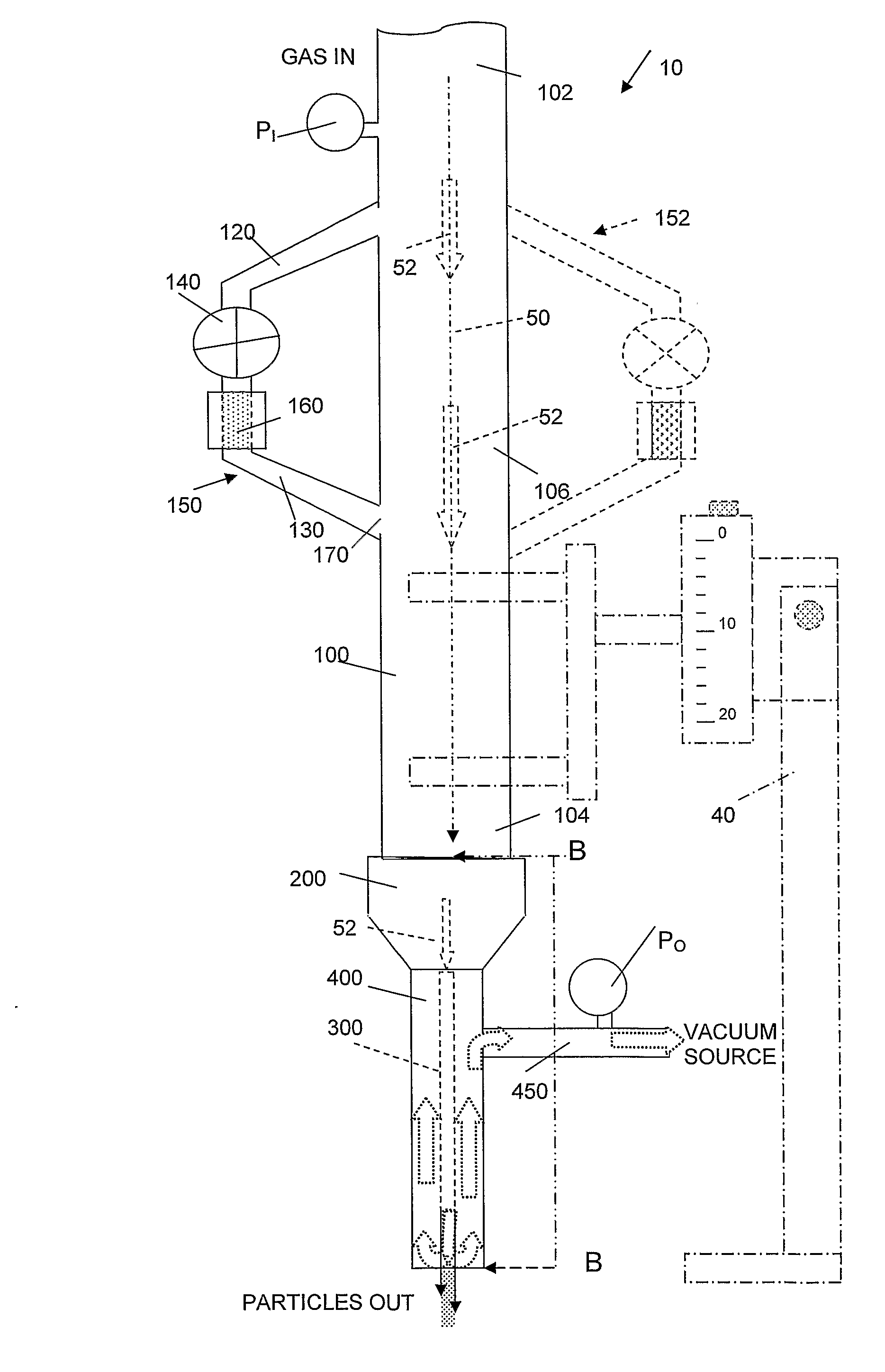Pneumatic Capillary Gun for Ballistic Delivery of Microscopic Particles into Tissue
a pneumatic capillary and ballistic technology, applied in biomass after-treatment, biochemical apparatus and processes, specific use of bioreactors/fermenters, etc., can solve problems such as mechanical damage to even the softest live tissues, and achieve the effect of increasing throughpu
- Summary
- Abstract
- Description
- Claims
- Application Information
AI Technical Summary
Benefits of technology
Problems solved by technology
Method used
Image
Examples
example 1
[0059]Localized Delivery of dsRNA and Plasmid DNA into Leech Embryos
[0060]The inventive capillary gun was used for localized delivery of dsRNA and plasmid DNA into muscle cells and central neurons of live embryos of the medical leech, Hirudo medicinalis. The leech embryo is a useful model for studying the influence of expression levels of specific genes on the morphology and function of the nervous system.
[0061]Referring to FIG. 8, to adapt the gun for accurate delivery of particles into the embryos, it was mounted on a micromanipulator 40, and a specially designed head 80 was attached to the gun. Head 80 was machined of Plexiglas®, with its upper part adapted to retain semiconductor laser 53 with an adjustable lens (not shown). Laser 53 generates a beam of light directed through the inner capillary, focused at the embryo surface in sample stage 16 (a few mm from the nozzle) and used for aiming. The surface of the embryo was imaged with a video microscope (magnification 0.7-4.5×) (n...
PUM
| Property | Measurement | Unit |
|---|---|---|
| inner diameter | aaaaa | aaaaa |
| pressures | aaaaa | aaaaa |
| diameter | aaaaa | aaaaa |
Abstract
Description
Claims
Application Information
 Login to View More
Login to View More - R&D
- Intellectual Property
- Life Sciences
- Materials
- Tech Scout
- Unparalleled Data Quality
- Higher Quality Content
- 60% Fewer Hallucinations
Browse by: Latest US Patents, China's latest patents, Technical Efficacy Thesaurus, Application Domain, Technology Topic, Popular Technical Reports.
© 2025 PatSnap. All rights reserved.Legal|Privacy policy|Modern Slavery Act Transparency Statement|Sitemap|About US| Contact US: help@patsnap.com



